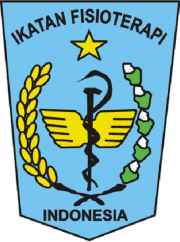Pengaruh Pemberian Deep Neck Flexor Muscle Activation Terhadap Nyeri Leher: Critical Review
Yusria Apriliani(1*), Arif Pristianto(2), Wijianto Wijianto(3), Wahyuni Wahyuni(4)(1)
(2)
(3)
(4)
(*) Corresponding Author
Abstract
Latar belakang Nyeri leher menyebabkan penurunan kekuatan otot, dan penurunan daya tahan otot sternocleidomastoid dan deep cervical flexor. Hal itu menyebabkan disfungsi mekanis dan nyeri kronis. Aktivasi deep cervical flexion muscle merupakan bentuk latihan penguatan pada otot, mampu memberikan efek yang signifikan dalam menurunkan nyeri leher. Tujuan penelitian ini bertujuan untuk mengetahui pengaruh pemberian deep neck flexor muscle activation pada nyeri leher Metode metode penelitian critical review dan desain studi randomized controlled trial menggunakan mesin pencarian literatur seperti Pubmed Central (PMC) dan Google Scholar, kemudian dilanjutkan dengan mengidentifikasi jenis Quartile (Q1-3) menggunakan Scimago Journal and Country Rank (SJR) dan penilaian dengan PEDro scale Hasil Sebanyak 9 artikel yang digunakan sebagai landasan penelitian, pada DCF menunjukan penurunan nyeri dengan VAS. Kesimpulannya penelitian menunjukkan adanya pengaruh yang signifikan pada latihan deep neck flexor muscle activation terhadap penurunan nyeri leher pada kondisi nyeri leher kronis maupun non spesifik. Pemberian deep neck flexor muscle activation yang terdiri dari craniocervical flexion, dan cervical stabilizating exercise. Latihan ini dilakukan dengan mendorong kepala kearah belakang dengan menjaga posisi kepala tetap lurus dan diberikan berupa tahanan hingga waktu yang sudah ditentukan
Kata kunci nyeri leher, muscle activation, DFC
Full Text:
PDFReferences
Bobos, P., Billis, E., Papanikolaou, D. T., Koutsojannis, C., & Macdermid, J. C. (2016). Does Deep Cervical Flexor Muscle Training Affect Pain Pressure Thresholds of Myofascial Trigger Points in Patients with Chronic Neck Pain? A Prospective Randomized Controlled Trial. Rehabilitation Research and Practice, 2016. https://doi.org/10.1155/2016/6480826
Borisut, S., Vongsirinavarat, M., Vachalathiti, R., & Sakulsriprasert, P. (2013). Effects of strength and endurance training of superficial and deep neck muscles on muscle activities and pain levels of females with chronic neck pain. Journal of Physical Therapy Science, 25(9), 1157–1162. https://doi.org/10.1589/jpts.25.1157
Cheung, J., Kajaks, T., & MacDermid, J. C. (2013). The Relationship Between Neck Pain and Physical Activity. The Open Orthopaedics Journal, 7(1), 521–529. https://doi.org/10.2174/1874325001307010521
Chung, S., & Jeong, Y. G. (2018). Effects of the craniocervical flexion and isometric neck exercise compared in patients with chronic neck pain: A randomized controlled trial. Physiotherapy Theory and Practice, 34(12), 916–925. https://doi.org/10.1080/09593985.2018.1430876
Ghaderi, F., Jafarabadi, M. A., & Javanshir, K. (2016). The clinical and EMG assessment of the effects of stabilization exercise on nonspecific chronic neck pain: A randomized controlled trial. Journal of Back and Musculoskeletal Rehabilitation, 30(2), 211–219. https://doi.org/10.3233/BMR-160735
Hande, D., & Agrawal, Y. K. (2017). International Journal of Multidisciplinary Research and Development Effect of activation of deep neck flexor muscle exercise on neck pain due to smartphone addiction. Issue, 4(7), 489–492. www.allsubjectjournal.com
Izquierdo, T. G., Pecos-Martin, D., Lluch Girbés, E., Plaza-Manzano, G., Rodríguez Caldentey, R., Mayor Melús, R., Blanco Mariscal, D., & Falla, D. (2016). Comparison of cranio-cervical flexion training versus cervical proprioception training in patients with chronic neck pain: A randomized controlled clinical trial. Journal of Rehabilitation Medicine, 48(1), 48–55. https://doi.org/10.2340/16501977-2034
Jull, G. A., Falla, D., Vicenzino, B., & Hodges, P. W. (2009). The effect of therapeutic exercise on activation of the deep cervical flexor muscles in people with chronic neck pain. Manual Therapy, 14(6), 696–701. https://doi.org/10.1016/j.math.2009.05.004
Khan, M., Soomro, R. R., & Ali, S. S. (2014). The effectiveness of isometric exercises as compared to general exercises in the management of chronic non-specific neck pain. Pakistan Journal of Pharmaceutical Sciences, 27(5), 1719–1722.
Kim, Jin Young & Kwag, K. il. (2016). 2016 Kim Cervical fleor with neck pain. Journal of Physical Therapy, 2016(28), 269–273.
Lee, K. W., & Kim, W. H. (2016). Effect of thoracic manipulation and deep craniocervical flexor training on pain, mobility, strength, and disability of the neck of patients with chronic nonspecific neck pain: A randomized clinical trial. Journal of Physical Therapy Science, 28(1), 175–180. https://doi.org/10.1589/jpts.28.175
Prasana, I. G. E. J., Adiputra, I. N., & Dinata., I. M. K. (2018). Original article. 6(1), 25–28.
Rajalaxmi, V., Manickam, M., Srilakshmi, M., Arunselvi, J., Jayabarathi, R., Anupreethi, P., & Sujatha, K. (2020). The role of multistep core stability exercise with and without conventional neck exercises in the treatment of chronic non-specific neck pain a randomized controlled trial. Biomedicine (India), 40(2), 232–235.
Suvarnnato, T., Puntumetakul, R., Uthaikhup, S., & Boucaut, R. (2019). Effect of specific deep cervical muscle exercises on functional disability, pain intensity, craniovertebral angle, and neck-muscle strength in chronic mechanical neck pain: A randomized controlled trial. Journal of Pain Research, 12, 915–925. https://doi.org/10.2147/JPR.S190125
Thoomes-De Graaf, M., & Schmi, M. A. (2012). The effect of training the deep cervical flexors on neck pain, neck mobility, and dizziness in a patient with chronic nonspecific neck pain after prolonged bed rest: A case report. Journal of Orthopaedic and Sports Physical Therapy, 42(10), 853–860. https://doi.org/10.2519/jospt.2012.4056
Yuliana, E., & Kushartanti, B. M. W. (2019). Manipulasi Topurak (Totok, Pukul, Gerak) Untuk Penyembuhan Nyeri Dan Ketegangan Otot Leher. Medikora, 17(2), 113–119. https://doi.org/10.21831/medikora.v17i2.29182
Article Metrics
Abstract view(s): 667 time(s)PDF: 745 time(s)
Refbacks
- There are currently no refbacks.







